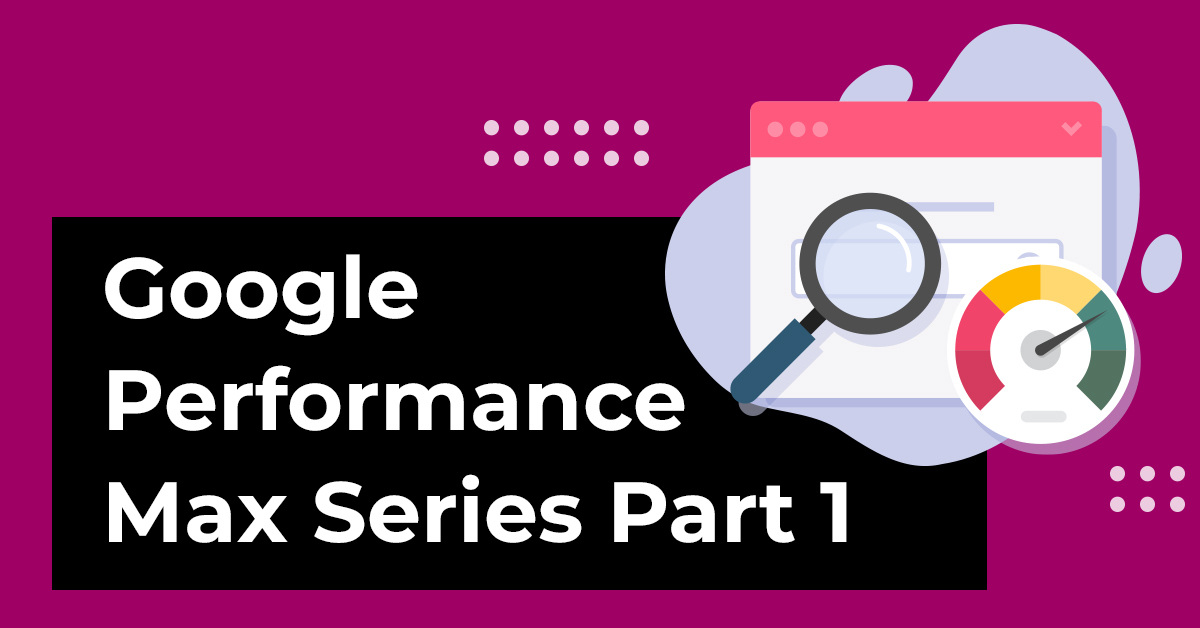So, let’s talk about Google Performance Max.
This is the first blog post in a series that will delve into Performance Max and how to get the most out of your new options. But before we can talk about Google Performance Max, let’s talk about what it wasn’t… that is, everything that came before it.
If you’re a marketer – and if you’re not, I’m pleasantly surprised but still kind of perplexed that you’ve found this post and are reading it, my good visitor – then odds are you’re more than familiar with how Google advertising works.
How could you not be? Google is more than just the proverbial 800-pound gorilla in the online advertising market. At times, Google can feel like the entire market – like the entire clan of gorillas, not just one single silverback with an uncanny penchant for finding what you’re interested in.
Google Ads (formerly called Google AdWords), Google Shopping Ads, GMail ads, YouTube ads, Google Display Ads – the list of what Google has to offer digital marketers goes on and on. And yet, as much as Google advertising could be potentially lucrative, it also had some major downsides.
Let’s face it: Google advertising can be downright clunky. It requires keyword research, which can be a massive bar for entry to new advertisers, and you need to set up different campaigns for each of its verticals.
Let’s say you’re trying to market your ecommerce startup and are more of a marketing novice. With the current iteration of Google’s advertising network, you’ll have to do keyword research to try and find the most relevant terms people are searching for (you hope). You’d probably be better off setting up a Google Shopping campaign instead, but since – as mentioned – you’re a novice, you don’t know that, so you set up a normal Google Ads campaign.
And then you wonder why your ROAS is so low!
Maybe it’s on you for having the temerity to not be an instant marketing expert, sure. But maybe it’s on Google for not having an intuitive way to find the best audience for your business or use its wide-reaching network.
(It’s on Google. It’s the second one.)
Fortunately, there’s a change in the headwinds. There’s a new gorilla silverback in town. Well, it’s kind of the same silverback, but this time he’s gotten a little better at making things more convenient and efficient.
That gorilla’s name is Google Performance Max.
What Is Google Performance Max?

Google Performance Max is Google’s best stab at making a marketing system that is audience-focused and goal-driven, rather than focused entirely around search keywords (which is, you know, basically how everything Google ads-related has worked since the dawn of time, as discussed above).
But what does that actually mean? What does Google Performance Max change compared to how it worked before?
Before, when you wanted to set up a Google Ads campaign, you’d put in your keywords. You’d add your headlines, you’d add negative keywords, you’d include multiple headlines and descriptions so you could let Google A/B test to find the most effective combinations, you’d include an image as needed.
And that was that. Google would only run with what you included. Your Google Ads headlines and images wouldn’t suddenly appear as a Google Display Ad on another site. You wouldn’t show up in Gmail advertising. Your ad would appear if – and only if – someone searched for your keywords on Google.
This could be effective, sure. Lots of people made money with well-tuned Google advertising campaigns.
But Google Performance Max (or “PMax” for short) is different.
Asset Groups: Supporting All Your Google Advertising Needs

With Google Performance Max, at the start of the campaign, you’ll upload all of your relevant assets – images, videos, headlines, descriptions, logos – as part of an “asset group.” You’ll target various audiences based on things like interests and demographics.
And then, well… Google PMax will start doing its thing. The ever-reaching, all-seeing Google algorithm will test out various ads and ad formats across the Google network. You don’t have to set up a separate Gmail marketing campaign or a separate Google Shopping campaign or anything like that – Google Performance Max will take all of your assets and go “Hmm, let’s try this.”
The beauty of Performance Max is that it not only lets you target audiences who you know are already interested in your product or service, but it will be much more effective and efficient at finding related groups that you might never have thought of on your own.
For instance, say you own or represent a client that sells custom covers for patio furniture. Under the old way of doing things, you could target people who searched for “custom covers for patio furniture” (or so on).
You could even target people who searched to buy patio furniture in the first place, because hey, they’ll need covers for their furniture, right?
But now, Google Performance Max can go one step beyond. For instance, you might discover that people who buy patio furniture covers are closely related to people who hire landscaping services, because duh – once you’ve landscaped your home, you probably want to protect all your new outdoor digs!
Google Performance Max: Goal-Driven, not Goal-Adjacent
With the old Google ads model, you could obviously track your conversions, whether that conversion was a file download, a form fill, or just a page visit. However, as previously mentioned, Google advertising was still keyword-driven.
You set up your campaigns, you set the keywords you wanted to target, and then you threw it out into the void of the internet and crossed your fingers that you’d done the proper keyword research.
In other words, you were targeting an audience – people searching for your keywords – and then shrugging and going “hope they convert lol”
Google PMax inverts this. Once you’ve set your Asset Group, you give Google a goal you want it to accomplish – filling out a form, purchasing a product, signing up for your email list – and Google goes “all right, I’ll do my best!”
Google Performance Max will then use the Asset Group you’ve entered and the audience (or audiences) you’ve targeted and pair the best combinations with the best medium to try and accomplish your goal, all while learning more about your business, the audience, and the best ways to connect them while reducing your ROAS.

So, Google Performance Max Is Basically Just Like Facebook Advertising, Then?
I mean, we wouldn’t put it like that, specifically, but they definitely have a lot more in common than Facebook advertising did with the previous iteration of Google advertising – namely, the focus on audiences and goals rather than keywords.
But there’s a massive difference between them: Facebook is a website. A big website, yes, but a website nonetheless… and Google can sometimes feel like it’s the entire internet.
With Facebook advertising, you get access to Facebook and Instagram ads, but Google gets you Google, YouTube, Gmail, the entire suite of every website that uses Google Display Ads for money (which is, you know, a lot of ‘em.)
Does this mean that every business that runs Facebook advertising should turn around and instantly dump all of that money into Google Performance Max, instead?
Of course not – Facebook and Instagram are still very important platforms especially for certain audiences. Nothing Google has is a good replacement for advertising, say, clothing or other highly visual brands on Instagram. (Yet. The gorilla is always learning new things.)
Also, let’s lay it on the table here: There are some things and changes that have come with Google Performance Max that are different enough to make us a little wary.
For instance, PMax all but does away with the entire concept of custom-built, purpose-driven landing pages that are designed to get visitors to take a certain course of action. Instead, Google is betting that its algorithm can drive conversions better by learning which page to send traffic to once they’ve clicked on an ad.
To put it mildly, this is a huge swerve from over a decade of conventional digital marketing wisdom, which suggests that anything that could distract visitors from the immediate conversion action is just a waste of advertising dollars. It’s possible that Google might be onto something, and perhaps its algorithm might wind up knowing us more than we know ourselves, but that’s definitely different enough to make the most experienced marketer do a double-take.
But there’s no denying that in terms of changing the game, Google PMax is going to make things very different for a lot of marketers. From what we can see, we think it’ll be better than how it was before, and not by a little bit, either.
So, how can your business properly set up and run Google Performance Max ads? We’ll cover that in the next installment of this blog series. Alternatively, if you want to achieve the best results with Google Performance Max ads, contact SevenAtoms, a Google Ads agency that is also a Premier Google Ads Partner.










